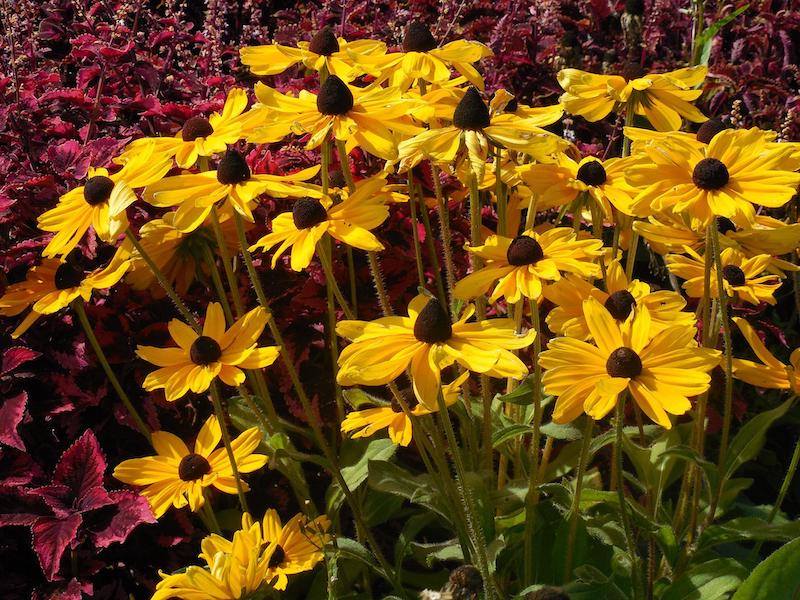Black-Eyed Susans are perennials that include native varieties and cultivars that have been bred for larger size and/or flower displays during the blooming period. Both the native varieties and the ornamental cultivars need little supplemental fertilizing. Rudbeckias in general thrive in lean soils of almost any texture, from clay to sandy. An annual application of slow-release, granular fertilizer will help the Black-Eyed Susans to continue growing vigorously and develop strong flower stems.

How to Fertilize Black-Eyed Susans
Soil tests are always a good idea if you have never done one. The soil test will let you know if your soil is naturally high or low in the macronutrients, N (nitrogen), P (phosphorous), and K (potassium). The test can also recommend what nutrients to add to balance your soil, and identify if there are any contaminants in your soil. The local county extension or Master Gardener’s office should be able to provide the information for a testing lab in your area.
Plants that require lower levels of fertilizers, like Black-Eyed Susans, will benefit from a mulch of organic compost or shredded leaves in the fall. The organic material in compost helps to bulk up the soil texture and make it more moisture retentive while also slowly adding nutrients as it continues to decompose.

Best Time To Fertilize Black-Eyed Susans
The best time to apply fertilizers for perennials is early in the spring as the new growth is emerging. A single application of a slow-release, granular feed will support healthy growth all season long. Fertilizing too late in the summer will disrupt the plant’s need to prepare for dormancy and trigger new growth, taking energy away from the root system. Supplemental feeding of Black-Eyed Susan in containers should end in August so that the plants can prepare for dormancy in the fall.
Best Fertilizer For Black-Eyed Susans
Black-Eyed Susans will benefit from application of a complete, slow-release fertilizer with moderate levels of nitrogen. Dr. Earth and Down to Earth offer general fertilizers with optimal NPK ratios for these perennials. The nitrogen (N) and phosphorous (P) levels will encourage vigorous growth, deep green leaves, and strong flowering.
Black-Eyed Susan Fertilizing Tips
- Black-Eyed Susans rarely need much supplemental feeding
- Use a slow-release, complete granular fertilizer early in the spring when the first growth emerges
- Stop feeding container-grown plants in August to prepare them for dormancy in the fall
- Mulching with organic compost will provide most of the nutrients Black-Eyed Susan needs
Warnings
-Always wear protective gloves and a face mask when handling chemical fertilizers.
-Closely follow all directions and storage guidelines that are on the fertilizer label.
 |
Author Robbin Small - Published 7-26-2022 |
